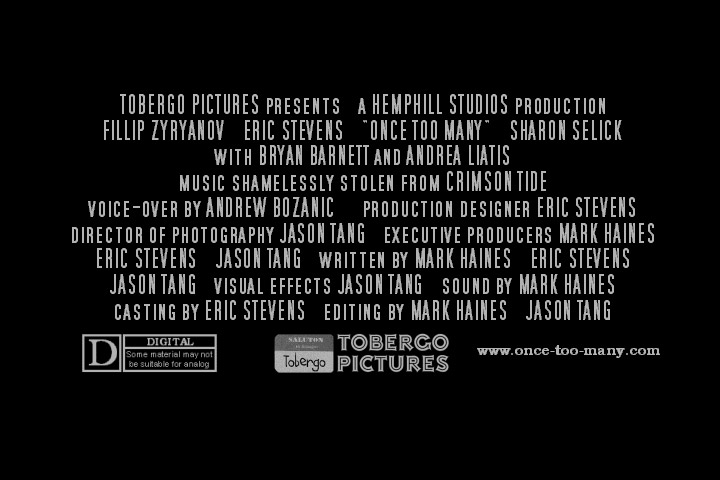a strong local presence leads to success in Asia
by George Walker
Themed entertainment has always followed a winding road filled with surprising turns and unexpected twists. This metaphorical “road” was initially little more than a single lane emanating from humble beginnings in Anaheim. Today it is more like a bustling highway, and it includes significant routes to the Middle East and Eastern Europe, but the primary destination is Asia – predominantly China.
Growth and more growth
Economic and demographic numbers from China today reflect more potential for themed entertainment development than ever before, anywhere in the world. Chris Yoshii, AECOM Global Director of Economics, explains that the percentage of people in China with the wherewithal to visit a theme park is larger than the total population of the US. “Right now there are 600 million people in that income level, growing to 1 billion in just 20 years.” Yoshii continues, “In the US, nearly every city with 1 million people has a major attraction or theme park of some kind. For China, with nearly 200 cities of 1 million or more, just to simply get statistically caught up with the US, a vast number of parks would need to be created.”

Similar findings are reported by Christian Aaen, Principal at Entertainment+Culture Advisors (ECA). “Indicators point to China as the number 1 market for theme parks in the history of the industry,” he says. “ECA is keeping busy in Asia – 50 to 60% of our work is in China these days and we are expanding our Hong Kong team.” Aaen cites the need for companies to lay down the foundation for long-term support of the industry in Asia because of its potential to create long-term demand. With a base population of 1.3 billion people, the implications of even a smaller statistical subset results in significant numbers. He points out that every year the country has seen a 10% growth rate in domestic travel – major, continuing, year-over-year increases of people looking for places to go locally.

Not only are those local tourists looking for something to do, but each year they have more money to spend doing it. We’ve all heard that China’s middle class is growing, but the key is the sustainable growth of national income at 7-8%. “And that is just the average,” Aaen adds. “Some areas in Western China are growing as much as 12-15%.” These “first-tier cities” are seeing the most activity and development.
Aaen points out that there are other positive factors beyond merely counting the potential number of visitors. “China’s government is making huge investments developing the infrastructure of mass tourism. Their projects for roads and high-speed rail (HSR) are on an immense scale. Soon all the major tiers will be connected by HSR to Hong Kong completing in 2015.”
The influence of China reaches beyond its borders as well, impacting growth in the greater Asian region from an increase in outbound travel of 18-20% annually. Macau, Singapore, Malaysia, and Thailand are hot spots. “We are seeing these cities adapt to the tourist audience, serving up more entertainment,” Aaen adds. “The opening of Legoland Malaysia was very impressive, claiming 1 million visits in the first 4 months. That would be a strong opening for a family-based theme park no matter where it was in the world. The upcoming Desaru Coast resort being developed by Khazanah and Themed Attraction Malaysia (TAR) is also expected to set new standards. The recently announced project, set to open in 2015, will contain Ocean Splash Waterpark, Ocean Quest Marine Park, an Ernie Els-designed and another Vijay Singh-designed golf course, four hotels and a themed entertainment district. It shows there is great demand in the region.”
The road can be bumpy at times, though, with such an immense population. According to Nick Winslow, a leading recreational facilities and services consultant who was the driving force in realizing the USA Pavilion at the Shanghai Expo in 2010, “There are huge holiday periods, like Golden Week, when everyone goes out to do things all at once. This skews the traditional Design Day strategy. The parks need to be able to accommodate for that.” One way, Winslow indicates, is to invest in live entertainment that can be ramped up and down as needed. “The smart money is less investment on expensive attractions and equipment, and more on the environment and entertainment. Labor is cheap. Shows are less expensive to produce and maintain than rides.”
So how are companies positioning and adapting themselves to travel this road to the future of the attractions industry – to help feed China’s and Asia’s growing appetite for themed entertainment?
Building a local presence
The direction taken by FUNA International – a technology solutions company taking a major provider role for several large projects in China – has been to establish a strong local presence. Since its founding in 1972, FUNA has grown to encompass over 200 employees across 10 offices that span the globe, from their headquarters in Emden, Germany to the USA, Finland, Italy, France, Korea, and now, of course, China.

Brian Paiva, Vice President of Business Development and Strategic Planning at FUNA, sees the local approach as vital to doing business in the region. “Our strategy,” says Paiva, “is to be able to accept a contract for a project in China as either an international company or a local Chinese company. This gives our clients flexibility to choose what’s best for them based on the individual project requirements.” FUNA maintains a locally registered Chinese company with offices in Shanghai as well as a 6,500 square meter fabrication facility in Taizhou that is certified ISO 9001:2000 compliant. “This is a critical factor, whether the clients are government funded or private investors because they all prefer to use local resources,” notes Paiva, who will be a featured speaker at The 3rd Annual China Theme Park Expansion Summit in Shanghai (April 11-12). “Some projects in the region are mandated to have 80% of all work done by local vendors.” This may lead to traffic jams as the demand for technically skilled people is very high, yet the number of Chinese who are qualified to fill those roles is limited. Paiva emphasizes that FUNA “has created paths to finding specialized workers through long-standing relationships with local vendors.”
IAAPA, the leading association for the theme park industry, has also recognized the need for a local presence. In recent years IAAPA has done much to help build an industry forum in Asia with its now solidly established Asian Attractions Expo (AAE), taking place in 2013 in Singapore (June 4-7) and in 2014 in Beijing (June 17-20). Andrew Lee, Vice President of IAAPA Asia Pacific Operations, sees the organization as a bridge that connects clients and suppliers in the region, through AAE and through IAAPA’s Hong Kong office.
The IAAPA Hong Kong office is a resource staffed with professionals fluent in both languages and equipped to provide education for attraction operators and managers, suppliers, and government officials. “We work to foster the harmonizing of global standards throughout the region,” Andrew Lee adds, “and we are working on translating materials into multiple languages.”
The Themed Entertainment Association, founded 21 years ago in southern California, has likewise recognized that the epicenter of the industry is moving East, and has set up an Asia Division.
There are also emerging trade groups and events originating in Asia, such as the above-mentioned Theme Park Expansion Summit, organized by Noppen. The Summit brings together government officials, real estate developers, theme park & attraction operators, suppliers, media and other industry professionals from around the world for two days of presentations and discussions.
Traveling the road to success in the Asian theme park industry includes learning to navigate the complex monetary systems and laws. “There are differences working in Hong Kong, or Macau, or a special tax zone, as opposed to most of mainland China, and you can encounter significant duties and tariffs,” Paiva explains. “These fees are often a moving target, also. Valuations can fluctuate. Things change depending on where you are standing. A company can easily run into a wall of unanticipated expense. You have to do your research to understand all of the associated costs of doing business in China. FUNA has done enough projects in the region that our knowledge base has increased significantly.”

Size helps, especially if it is paired with financial stability. Scott Arnold, Design Manager at FUNA, says, “If you are a small company, you just don’t have the scale to protect yourself from the complications of the bureaucracy.”
Bureaucracy and the bottom line
Sometimes companies face obstacles in getting their money out of China. Nick Winslow advises prospective developers to reach out to the American Chamber of Commerce. “Issues regarding contracts, regulations and entitlements, repatriation, customs duties, etc. can be very complex and difficult in China,” he says. “In virtually all instances, an offshore developer will need a trustworthy Chinese partner. I recommend having strong Chinese legal counsel to provide advice and represent your interests. I have also found AmCham (The American Chamber of Commerce) to be a valuable asset.” The Chamber plays a role in helping to provide resources and information that help guide projects.

The Chinese business culture has many layers and its structures are not always comparable to those of the West. Scott Arnold puts it this way; “The org chart isn’t as self-evident. It is often difficult determining who has the authority to say ‘yes’ or ‘no.’” In part this is because China’s economy is not only growing fast, it is one of the fastest growing economies in history. There has been little time to create the documentation and standardized regulations that are customary to the entertainment industry in other parts of the world. “There is no master set of documents,” Arnold points out, and reiterates the value of local ties. “FUNA’s parent company has had a presence in China for years and that has allowed them to develop the contacts with local resources and experts, so that they are better prepared to get things done.”
Lisa Smith, President and Executive Producer of Renaissance Entertainment, a company that specializes in the production of live shows, attractions, and spectaculars, has found through her experiences in China that much of the decision-making happens at the top level. “Middle management isn’t as empowered in China as it is in the West. Having only one key point of decision-making often leads to a bottleneck, so be prepared for schedule delays as a result. There is so much bureaucracy that a certain amount just isn’t going to happen. The answer is just going to be ‘no.’”

Still, Smith is intrigued by the enthusiasm of the Chinese: “As a show producer, one surprise for me was that they like action, excitement, explosions. Their interests are not as reserved as those of other Asian cultures.” Producing shows to deliver the desired action, however, isn’t always easy. “Inherently the Chinese want to learn how to create this type of entertainment themselves, but the challenge is that they are skipping several steps and leapfrogging to complex, world-class attractions right away without having had the years of experience to build up to that point. We are producing shows and events that use special effects and technologies that simply have never been done in the country before, so there are no established paths to getting them permitted or even into the country. About 25% of the problems you encounter are things that just can’t get through customs, or are simply not allowed. You have to be flexible.”
A magical spirit
Traveling the road to themed entertainment development in China and Asia is complex and risky, but for those we spoke to, the rewards and future promise are worth the effort. Smith has been inspired in her work by the spirit of the Chinese. “They genuinely want to create something magical and that is very rewarding!”
Each successful project leads to more competition and raises the standard. Could this mean a Renaissance in the world of Experience Design? Scott Arnold is very excited about the possibilities. “I’m having a great time being in an environment where the culture is embracing the themed entertainment industry as a whole,” he explains, adding that “they haven’t had much exposure to it before and it is exciting to see people experiencing these things for the first time.”
“It’s easy to be dazzled by all the exciting projects and activity in China these days,” Nick Winslow adds. “We are witnessing a cultural change where the people are discovering their interest [in themed entertainment] in huge numbers.”
Brian Paiva is equally enthusiastic. “We are not here to execute a single, one-off project. In China, you have to play the long game. We are committed to forging the path and being the first to lay a strong foundation and springboard for many exciting new projects going forward.”
• • •
George Walker is a creative consultant who is excited to be starting a new role as Art Director for Ferrari World, Abu Dhabi. George calls himself a “Story Builder” who always aims to strike a balance between innovative ideas and realistic build-ability. His recent projects include the Baker Street rehab for Universal Studios Hollywood, and carving rocks for Disney’s Cars Land.
































